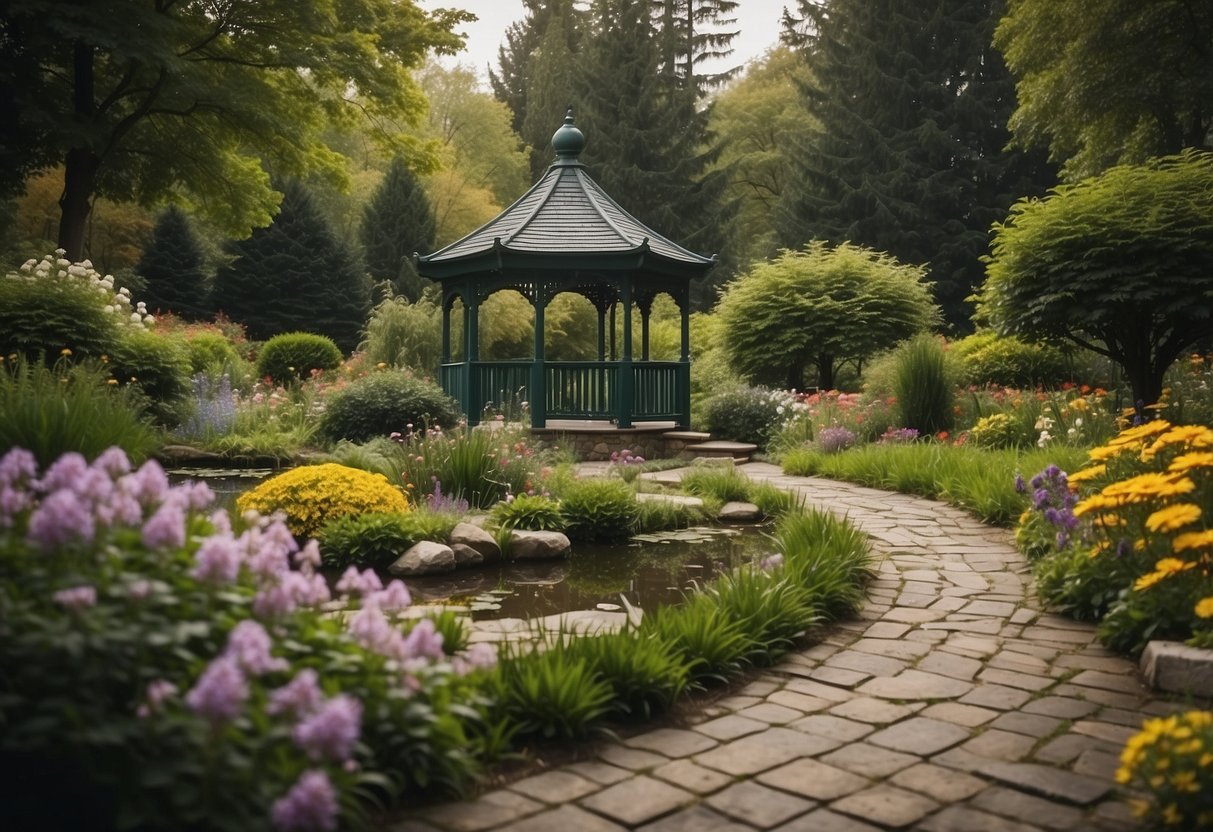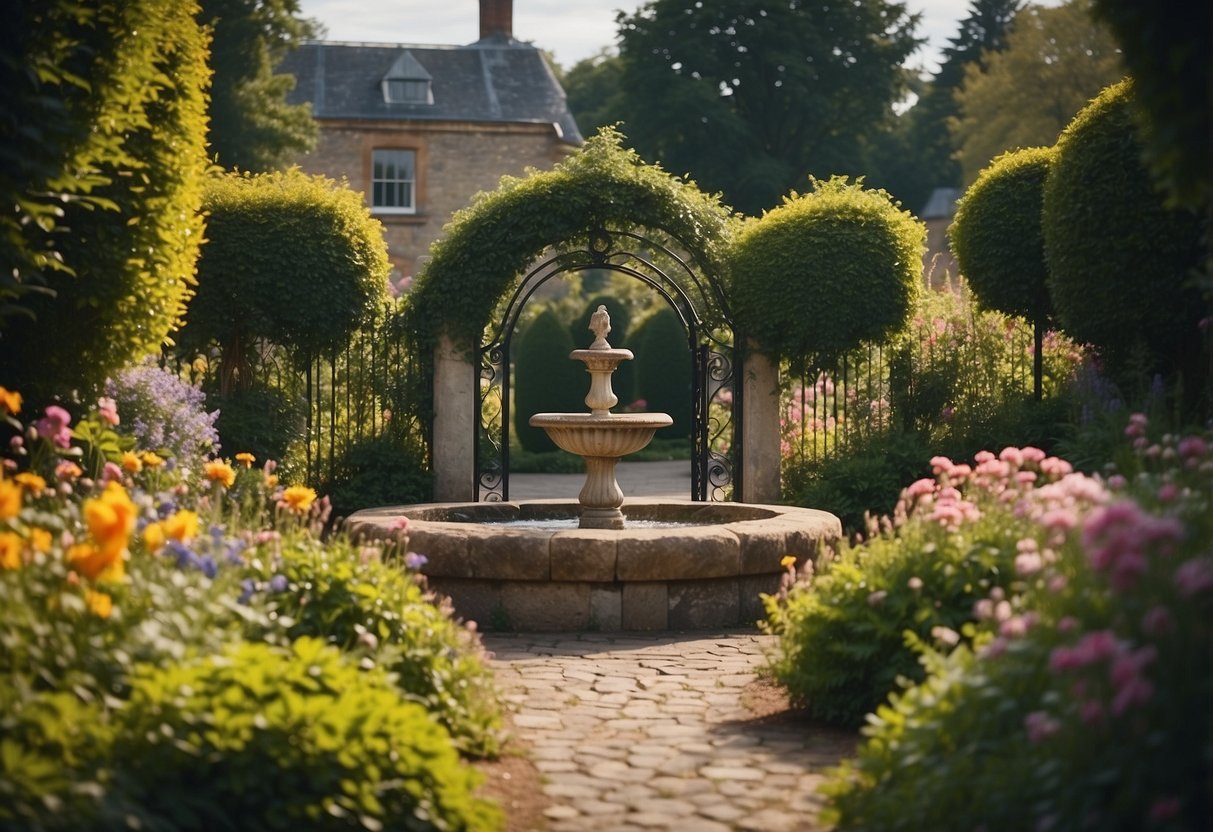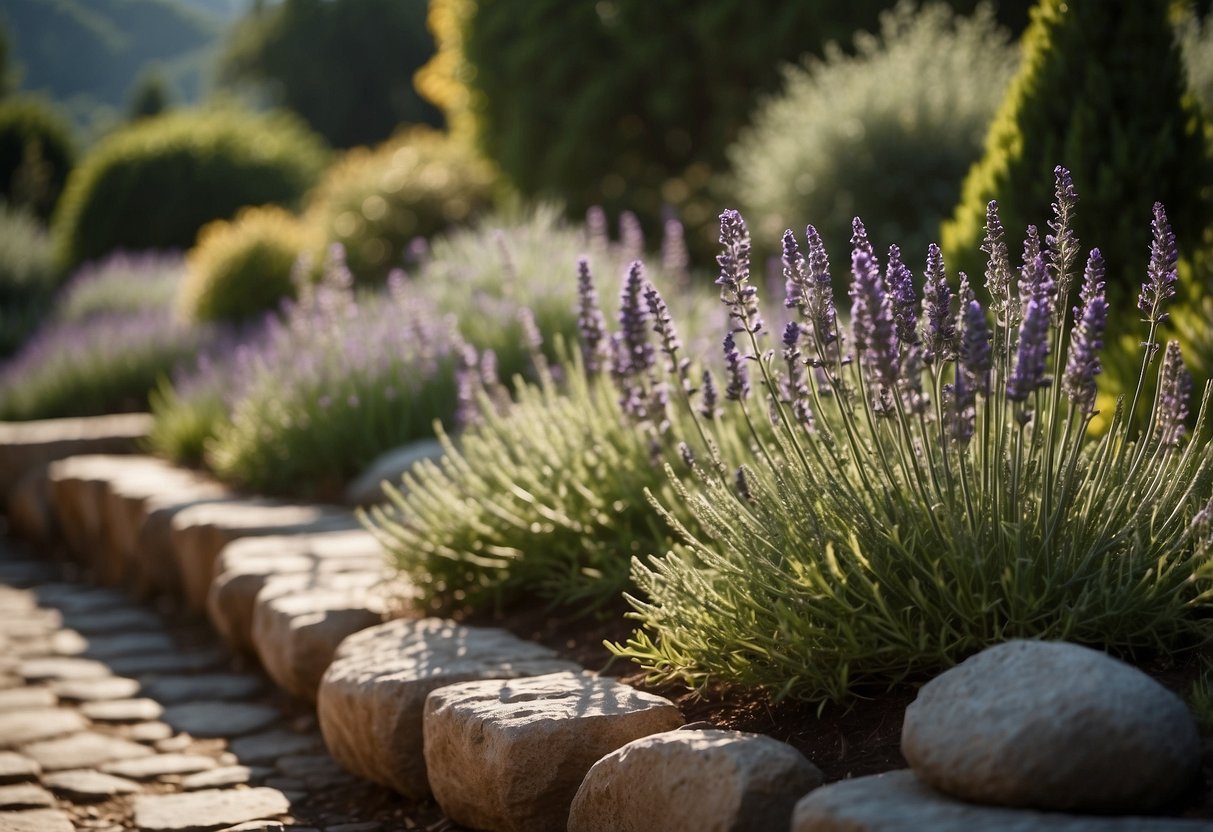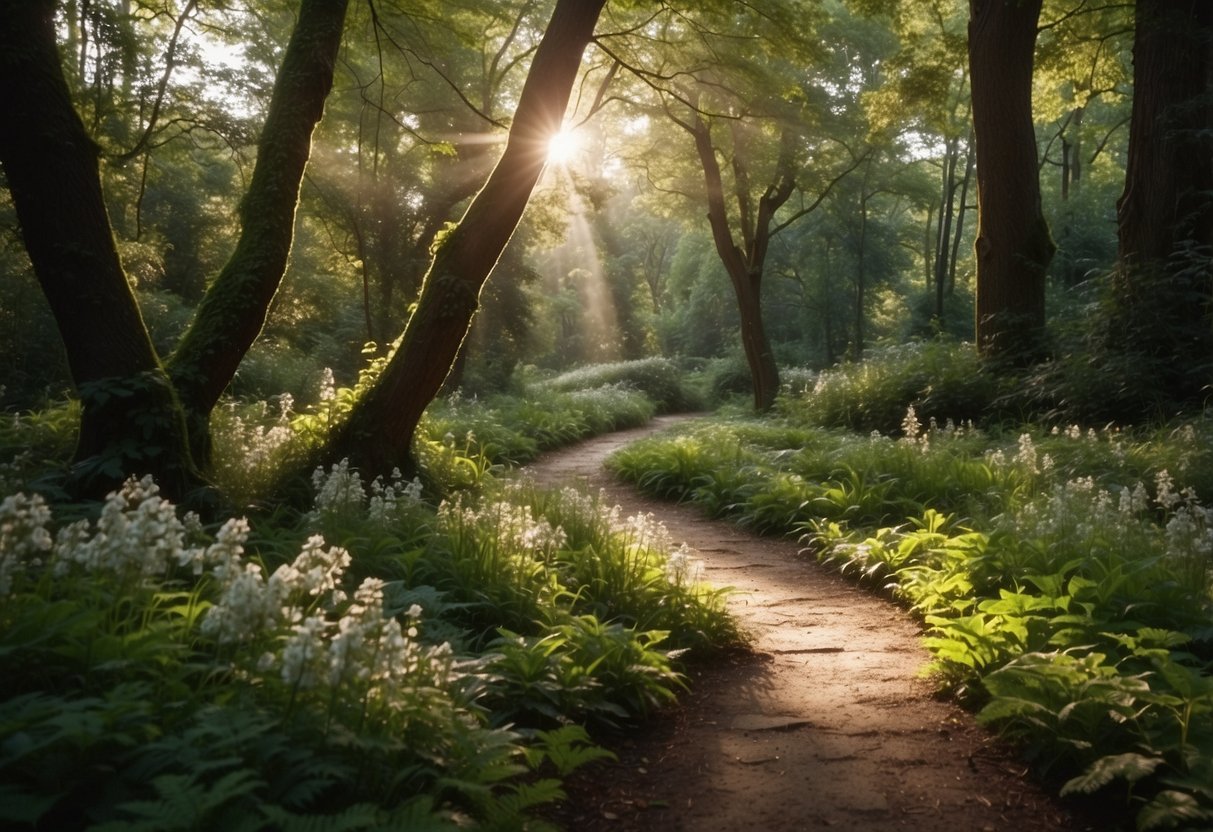English Garden Ideas: Creative Tips for a Charming Outdoor Space
Creating an English garden is a delightful way to bring the charm and elegance of the British countryside to your home. Filled with lush plantings and classic design elements, these gardens offer a space for relaxation and beauty.

Imagine walking through a garden path lined with blooming roses, fragrant lavender, and tasteful ornaments. You’ll discover that designing an English garden can be a rewarding and enjoyable project, transforming your outdoor area into a picturesque retreat.
1) Charming Cottage Garden

You will love creating a charming cottage garden. These gardens are known for their lush greenery and colorful flowers. From roses to daisies, you can mix different kinds of plants.
Adding herbs and vegetables to the garden makes it even more special. The variety attracts helpful insects while keeping pests away, which helps your plants thrive.
Cottage gardens are meant to look a bit chaotic, but this just adds to their charm. Simply let plants grow freely, and your garden will have a natural and inviting feel.
Learn more tips at The Spruce.
2) Victorian Walled Garden

A Victorian walled garden was a popular feature in the 19th century. These gardens often included high walls to protect plants from harsh weather and pests.
Pathways were common, lined with decorative edging like red brick or granite setts. Water features, such as rills, would add tranquility and charm to the space.
Incorporating a variety of perennials and fruit trees is key. For some ideas on how to get started, check out these Victorian walled garden ideas.
3) Elegant Parterre Garden

An elegant parterre garden features symmetrical patterns made with low boxwood hedges. These clean, geometric designs give your garden a classic, refined look.
You can plant colorful flowers like tulips and pansies within the parterre’s sections. This adds pops of color to the structured greenery.
Include gravel paths between the hedges for easy maintenance and walking. Add statues or ornate fountains to enhance the elegant atmosphere of your garden.
4) Wildflower Meadow

Creating a wildflower meadow in your garden is a beautiful way to attract butterflies and bees. You’ll get bursts of color with flowers like black-eyed Susan, butterfly weed, and wild asters.
Consider planting annual or perennial wildflowers to suit your garden needs. Annuals offer vibrant blooms but require reseeding each year, while perennials return year after year.
To get started, prepare your soil by removing any weeds and avoid adding fertilizer, which promotes weed growth. Regularly mowing and removing hay will help your wildflowers thrive.
Adding a mix of wild grasses can also enhance the meadow’s look and attract more pollinators.
5) Japanese Zen Garden

A Japanese Zen garden brings a sense of peace and simplicity to your space. You can start with gravel or sand to represent water, which adds a calming effect.
Adding a water feature surrounded by pebbles can further enhance the tranquility. The sound of gently flowing water can help you feel relaxed.
Incorporate natural elements like rocks and plants such as azaleas and moss. Keep the design minimalistic to maintain its serene nature. Embracing imperfections, known as Wabi-Sabi, adds a unique charm to your garden.
6) Traditional Herb Garden

You can create a lovely traditional herb garden by picking a sunny spot. At least half a day of sun is ideal.
Choose a classic shape like a circle or an ellipse. Add pathways with stones or bricks.
Include herbs like rosemary, thyme, and lavender. Don’t forget to add decorative elements like sundials or small statues to enhance the charm of your garden.
7) Rose Pergola

A rose pergola adds a touch of charm to your garden. Imagine walking beneath arching roses, their blooms overhead.
You can choose climbing varieties like ‘Gertrude Jekyll’ with its lovely scent.
For a fairytale look, consider a rose-covered pergola as a garden focal point, enhancing the space’s elegance and beauty.
8) English Knot Garden

An English knot garden is a really special way to show off your garden. These gardens have a unique woven look with plants crossing over each other.
Knot gardens need a lot of care, so be ready to trim and keep them neat. You can use plants like boxwood or lavender.
If you want a simpler design, you can try a parterre. These have the same elegant feel without the weaving.
9) Woodland Walk

A Woodland Walk can add a magical touch to your English garden. Birch trees with their light canopy are perfect, allowing dappled shade to filter through.
You can choose trees like rowans, crab apples, and hazels to fit the theme. Add ferns and wildflowers for that natural, enchanting feel.
Consider lifting the crowns of trees to make space and light for more plants. Sneak in a seating area for a peaceful escape.
10) Secret Garden Nook

Creating a secret garden nook adds a charming escape to your backyard. Start with a dedicated entrance, like an arbor or gate, to give it a special feel.
Use tall plants or hedges to create seclusion. Consider dahlias, which can grow up to six feet, adding height and privacy.
Add features like a wrought-iron bench and a gazebo covered in climbing roses for a romantic touch. Make the space feel like a hidden retreat where you can relax and unwind.
Understanding the Basics of an English Garden

An English garden is known for its charm and elegance. To create such beauty, it’s essential to understand the key characteristics and choose the right plants.
Key Characteristics of an English Garden
English gardens offer a mixture of formal structure and romantic, flowing elements. Symmetry is often a key feature, with well-trimmed hedges and gravel walkways creating a balanced look.
Boxwood hedges are commonly used to line walkways and flower beds, providing a sense of order and tidiness. Lawn spaces often act as open areas, adding a park-like feel. You can use garden ornaments like antique urns, birdbaths, or sundials to create focal points.
To create separate areas for different activities, use plants and hedges as natural dividers. Think about adding a section for entertaining friends and family.
Choosing the Right Plants
A classic English garden features a variety of plants that bloom at different times of the year. Roses are a staple and can be climbers or rambling varieties that spill over walls and trellises, adding a timeless touch.
Lavender hedges can flank pathways, introducing both beauty and fragrance. Utilizing traditional boxwood edging helps keep gardens neat and organized. Herb gardens, typically featuring plants like rosemary and thyme, are not only decorative but also practical.
When selecting plants, aim for a mix of perennials and annuals to ensure year-round color and texture. This keeps your garden vibrant and lively regardless of the season.
Design and Layout

Designing an English garden involves a harmonious layout, incorporating pathways and borders, and strategically placing garden structures and focal points. Each element plays a crucial role in achieving the classic English garden look.
Creating a Harmonious Layout
Achieving a harmonious layout in your English garden is about balancing different elements. Start by sketching a plan. Decide where to place your main flower beds, trees, and shrubs. Think of your garden as a series of outdoor rooms. Use hedges or ornamental grasses to create distinct areas.
Choose a mix of perennial plants like roses, peonies, and lavender. This adds variety and ensures that your garden looks beautiful throughout the year. Group similar plants together for a cohesive look.
Incorporating Pathways and Borders
Pathways and borders define the structure of an English garden. Traditional pathways are often made of brick or stone pavers, providing a classic look. For an eco-friendly option, use spaced flagstones, crushed gravel, or mulch. These materials allow water to percolate into the soil.
Borders can be created using low-maintenance plants like boxwood or flowering shrubs. Borders not only create a neat and contained look but also guide visitors through your garden. Well-defined borders can make a small garden feel larger and more organized.
Utilizing Garden Structures and Focal Points
Garden structures like arbors, trellises, and pergolas add vertical interest. Place an arbor at the entrance to create a charming entryway. Use trellises to support climbing plants like roses or ivy. Adding a pergola provides a shaded seating area, perfect for relaxation.
Focal points, such as a water feature or a statue, draw the eye. Place these strategically to create visual interest. A well-chosen focal point can anchor your design and provide a central feature for your garden layout.
By thoughtfully combining design elements, pathways, borders, and garden structures, you can create a beautiful and inviting English garden. Focusing on these key aspects will help you achieve a picturesque landscape that’s both functional and aesthetically pleasing.
For more detailed ideas, check out this guide on English Garden Designs.







